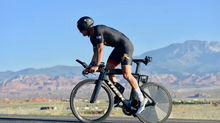An Athlete's Relationship with Food
- Jason Lentzke
- Jun 3, 2023
- 2 min read
Following my previous post about some of the learnings of my last two years of training and racing, I received a couple of messages asking me about the nutrition aspect of my triathlon experience, a topic that I decided to avoid in that blog due to its sensitivity.
The way we eat and what we eat is a very personal matter that is determined by a variety of factors such as our upbringing, our culture, our socio-economic status, and the place where we live, to name a few. For this reason, it can be risky to talk about a specific diet or way of eating. Nevertheless, I believe that some generalities can be highlighted, in regards to the relationship between endurance athletes and food.

In general, endurance sports require fueling before, during and after whatever activity we embark in, and, in such case, we need to make sure that we are fueling to perform and not performing to fuel. In other words, we have to make sure that we have consumed the enough and correct nutrients before, during and after training and competition to improve our performance and fitness. This being said, what we eat, especially before and during a race, has to be tested and trained throughout the different preparation cycles. We, as athletes, need to find the correct foods and beverages that work for each of us, not what works best for our training partners.
Coaches and mentors can be an excellent initial resource to help us develop nutritional racing and training plans, as well as to help us navigate the overwhelming world of sports nutrition. With so many brands available and articles talking about what is the ultimate endurance sports diet, it is easy to get lost in the debate and end up having troubling nutritional experiences. So, it is good to have external advice from experienced professionals. Also, in more extreme cases, or to develop a much more specific dietary structure, it is always a good idea to consult with a Registered Dietitian (ideally a CSSD) that has knowledge and understanding of the nutritional requirements of an endurance athlete.
Also, we should take into consideration the resources available to access these foods in races away from home or during travel. A good tip is to pack easy to carry food that we know works for us in at all times or to find general staples easy to access in most places.

Finally, I think that, in many cases, food is demonized by some athletes, coaches and some sectors of the endurance sports community, something that can be dangerous and unfortunate. Yes, our performance can, sometimes, improve if we are leaner and lighter, but we have to be careful regarding the limits and meaning of what leaner and lighter is, as well as how we get to this place from a training perspective. There is no time for food to become the enemy of an athlete, and if this were to happen, we have to reach out for help urgently. No matter our athletic level, we have to be conscious of the importance that food has in our sports performances and in our lives, in general, and eat adhering to this mindset.





























Comments